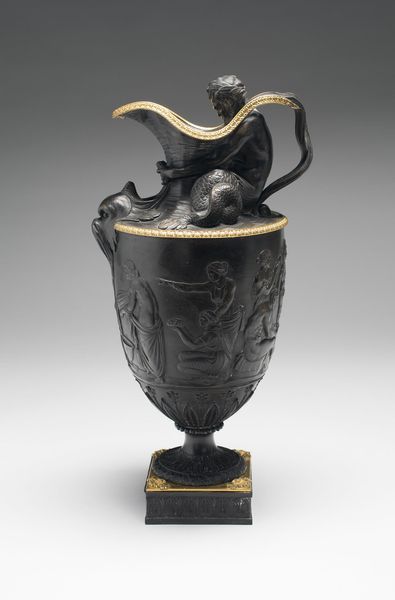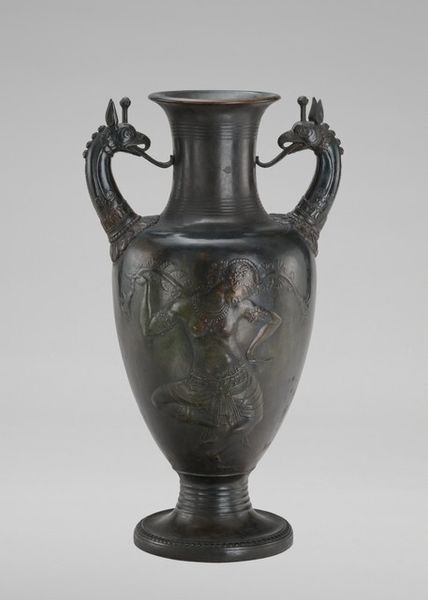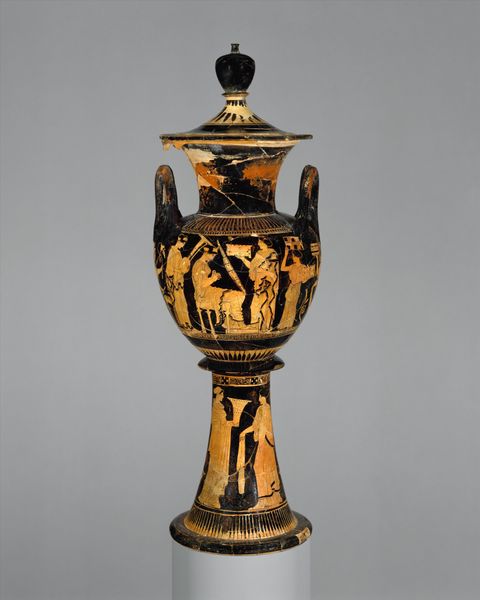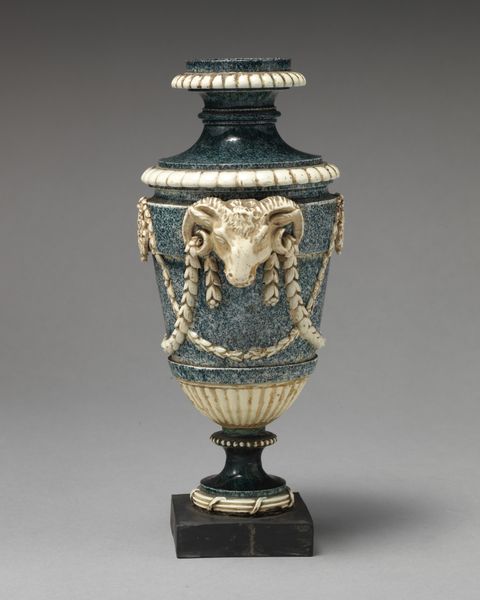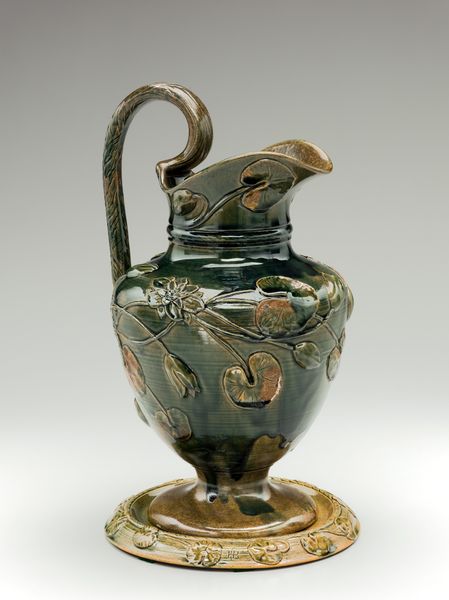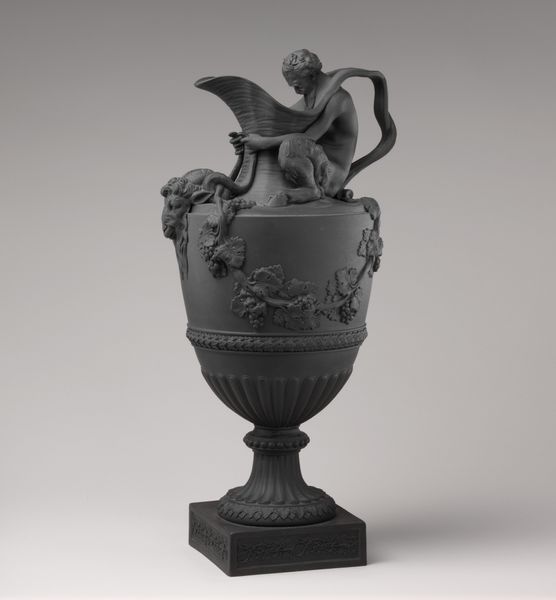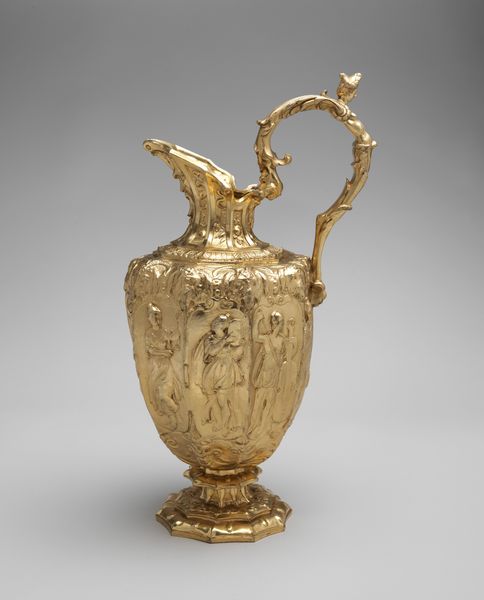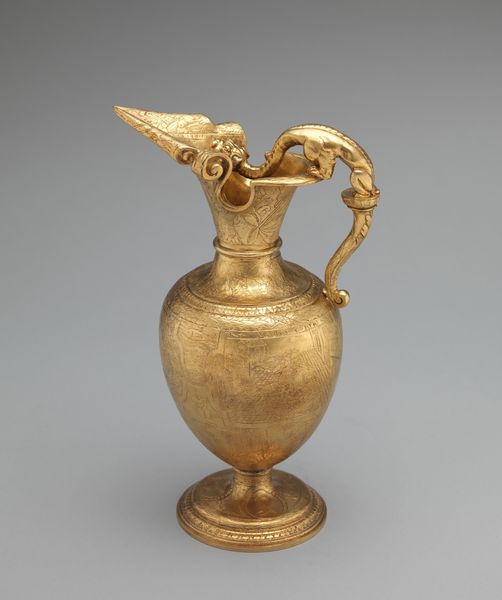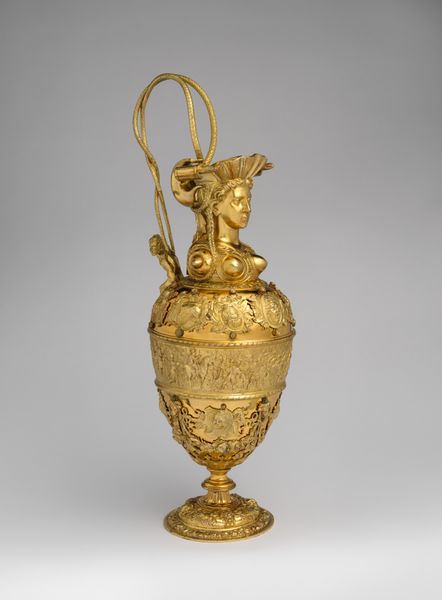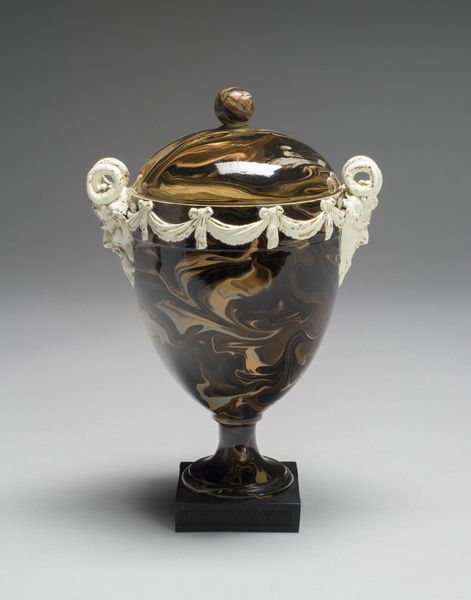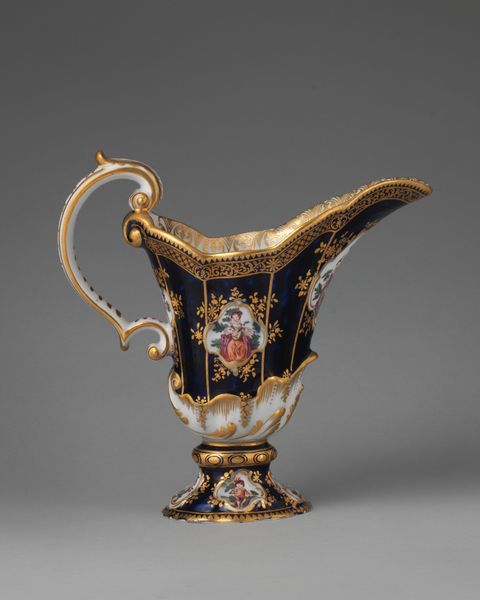
ceramic, bronze
#
neoclacissism
#
ceramic
#
bronze
#
decorative-art
Dimensions: 39.4 × 17.8 cm (15 1/2 × 7 in.)
Copyright: Public Domain
Curator: Standing before us is a wine ewer, a fascinating piece crafted between 1780 and 1785 by the Wedgwood Manufactory. The contrast between the matte ceramic body and the glimmer of bronze really draws the eye, doesn't it? Editor: Absolutely. There's an imposing solidity to it. The black color is so dense. It gives a somewhat serious, almost somber mood. It stands as a statement piece, and the detail suggests opulence, a reflection of its time perhaps. Curator: Indeed. Wedgwood was incredibly successful at capturing the neoclassical style that was popular then, and disseminating it widely. The materiality of these ceramic objects speaks to the social ambition of the burgeoning middle class, as these pieces became a status symbol, manufactured and sold on a grand scale. It is decorative art made within reach. Editor: And the figures around the ewer’s body and the sculptural elements! What narratives were popular at the time that drove those decorative choices, and how are the vessels used to carry larger meaning in aristocratic social settings? Who could afford the ewer, and what would they gain by owning or displaying this object? Curator: The depictions clearly draw upon classical Greek and Roman themes. The frieze of figures and mythological creature motifs adorning the ewer all nod to that period’s interest in antiquity. The ewer format itself, however, transcends classical utility. And considering Wedgwood’s innovative production techniques and global export practices, it wasn't strictly confined to the aristocracy, blurring the lines between exclusivity and broader aspirational appeal. Editor: It really challenges notions of high and low art of the period! And yet, even with relatively wider distribution, these ewer must still have made an impact, and been signifiers of luxury or refined aesthetic sensibilities. You still see them primarily in formal contexts, such as displays of wealth in homes. Curator: Precisely. By analyzing Wedgwood’s manufacturing methods and market, we gain invaluable insights into 18th-century consumption culture and class dynamics, far beyond mere aesthetics. The art, in fact, resides just as much in its creation and marketing strategies, too. Editor: Agreed. Thinking about the Wine Ewer, one grasps better at the complex relationship between socio-economic factors, material production and even aesthetic style in Georgian society. Curator: Absolutely. Its continued display in a space like the Art Institute here demonstrates that influence still ripples through our cultural landscape today.
Comments
No comments
Be the first to comment and join the conversation on the ultimate creative platform.
